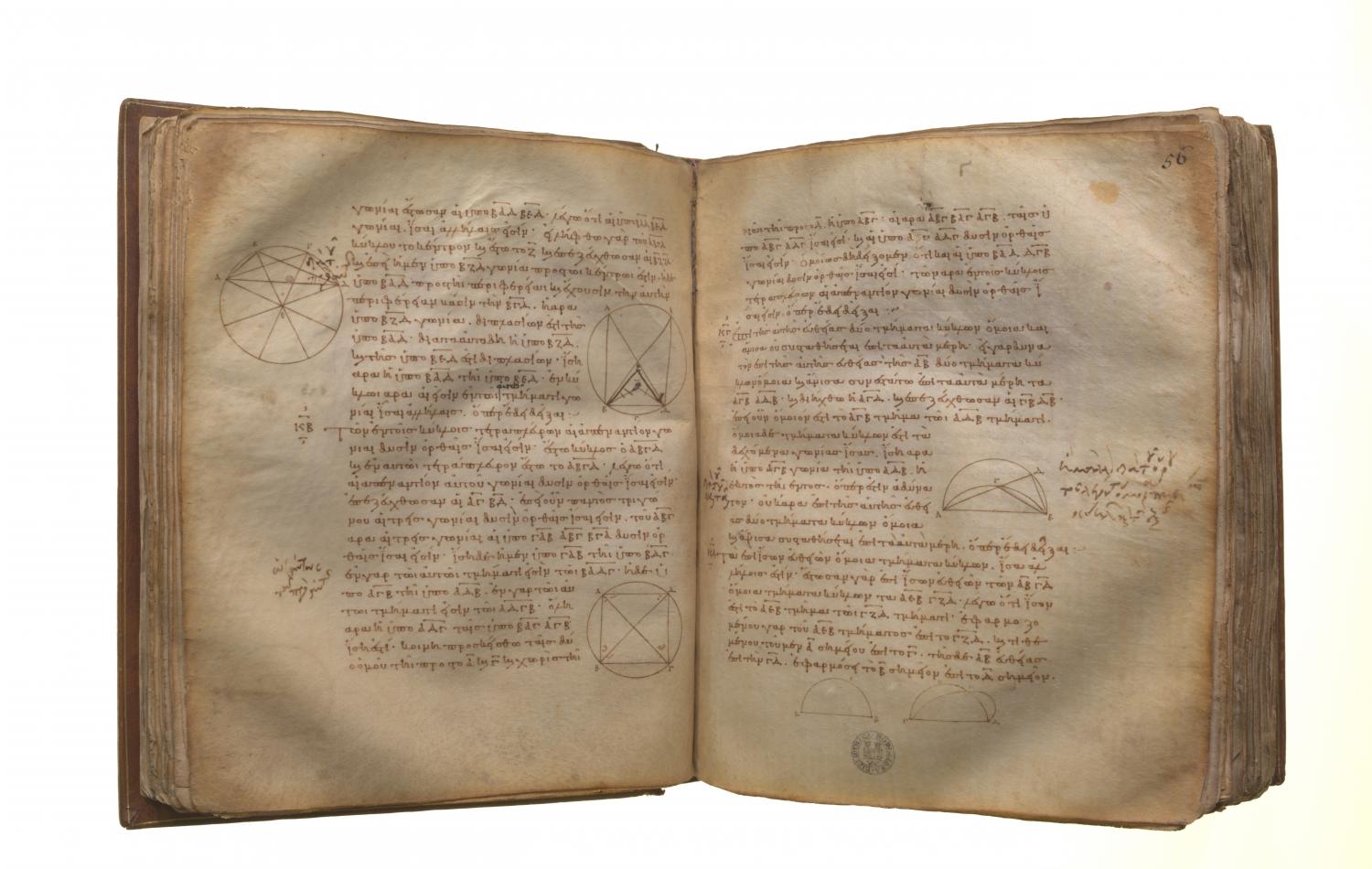Translations
Ἐπὶ τῆς αὐτῆς εὐθείας δύο τμήματα κύκλων ὅμοια καὶ ἄνισα οὐ συσταθήσεται ἐπὶ τὰ αὐτὰ μέρη. Εἰ γὰρ δυνατόν, ἐπὶ τῆς αὐτῆς εὐθείας τῆς ΑΒ δύο τμήματα κύκλων ὅμοια καὶ ἄνισα συνεστάτω ἐπὶ τὰ αὐτὰ μέρη τὰ ΑΓΒ, ΑΔΒ, καὶ διήχθω ἡ ΑΓΔ, καὶ ἐπεζεύχθωσαν αἱ ΓΒ, ΔΒ. Ἐπεὶ οὖν ὅμοιόν ἐστι τὸ ΑΓΒ τμῆμα τῷ ΑΔΒ τμήματι, ὅμοια δὲ τμήματα κύκλων ἐστὶ τὰ δεχόμενα γωνίας ἴσας, ἴση ἄρα ἐστὶν ἡ ὑπὸ ΑΓΒ γωνία τῇ ὑπὸ ΑΔΒ ἡ ἐκτὸς τῇ ἐντός: ὅπερ ἐστὶν ἀδύνατον. Οὐκ ἄρα ἐπὶ τῆς αὐτῆς εὐθείας δύο τμήματα κύκλων ὅμοια καὶ ἄνισα συσταθήσεται ἐπὶ τὰ αὐτὰ μέρη: ὅπερ ἔδει δεῖξαι.
On the same straight line there cannot be constructed two similar and unequal segments of circles on the same side. For, if possible, on the same straight line AB let two similar and unequal segments of circles ACB, ADB be constructed on the same side; let ACD be drawn through, and let CB, DB be joined. Then, since the segment ACB is similar to the segment ADB, and similar segments of circles are those which admit equal angles, [III. Def. 11] the angle ACB is equal to the angle ADB, the exterior to the interior: which is impossible. [I. 16]
